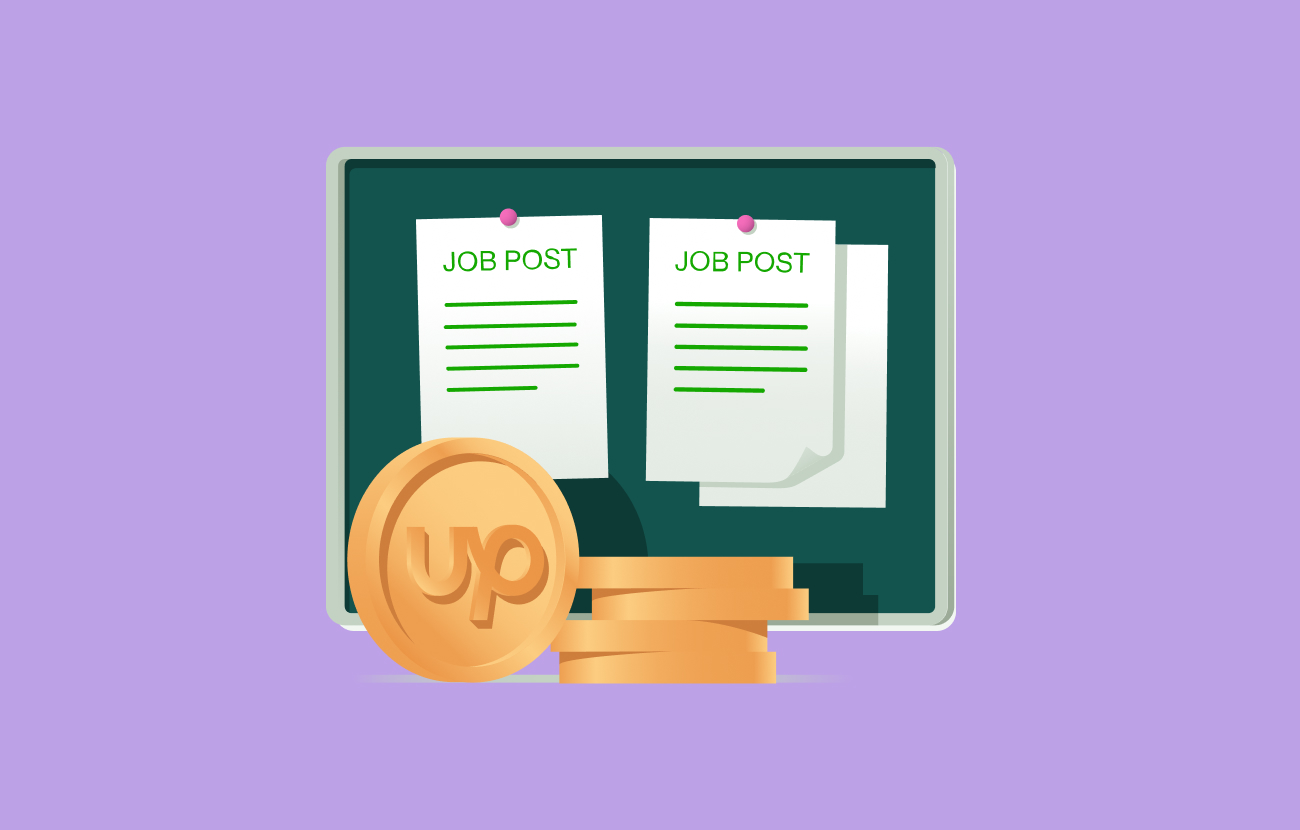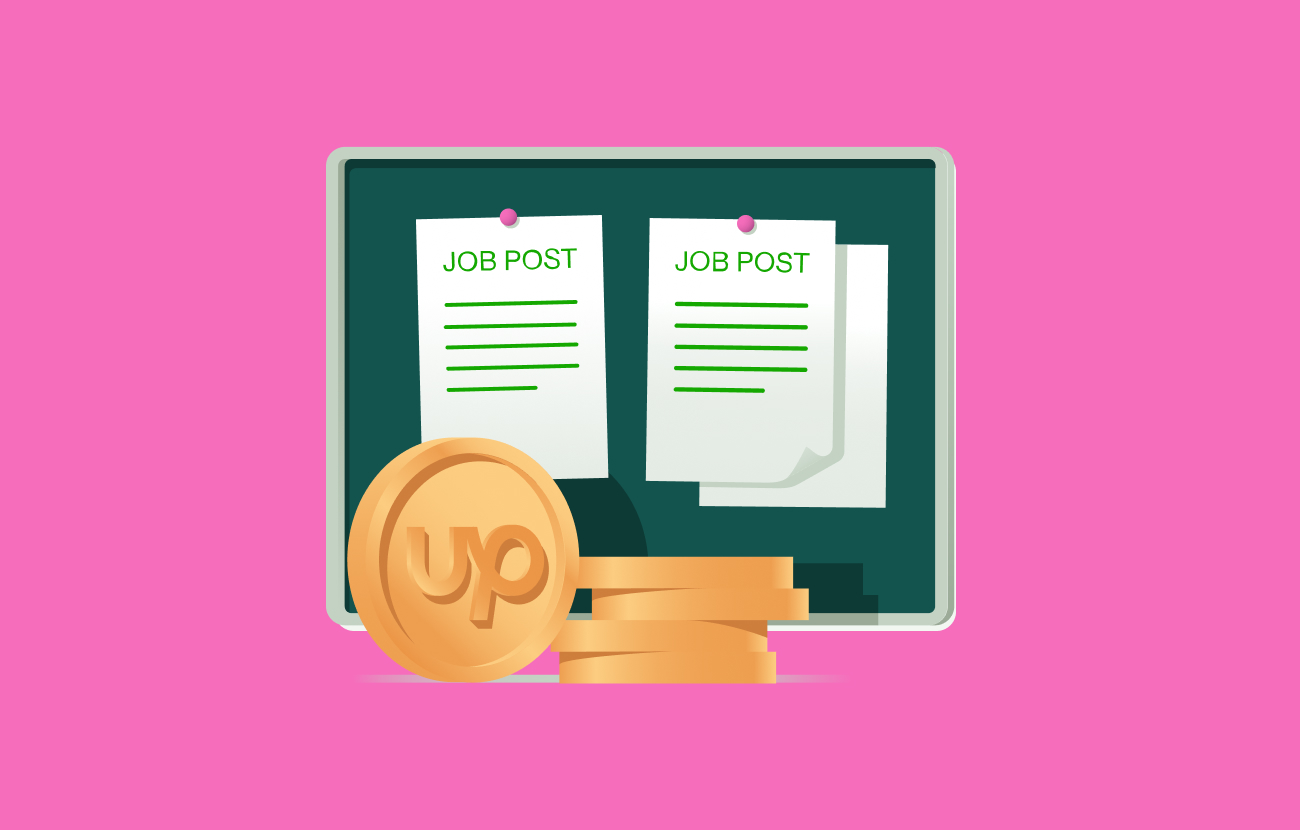11 Ways for Small Businesses To Use AI in 2026
From improved decision-making to task automation, discover how you can use AI to streamline your business processes, along with key benefits and challenges.

Artificial intelligence (AI) continues to see widespread adoption across industries and business functions, and to reshape how companies operate. From marketing to human resources, AI is being used throughout organizations of all sizes to streamline tasks, improve data analytics, and make better informed decisions more quickly.
Some of the most impactful technologies in AI include generative AI and natural language processing (NLP) tools like ChatGPT, machine learning, and deep learning.
Rather than replacing workers, AI is used to reduce repetitive work, drive efficiencies, and maximize human potential by helping employees and businesses work more strategically. For small businesses with lean teams and resources, AI can offer a strategic advantage by automating routine tasks and scaling operations, enabling SMBs to compete more effectively with larger organizations. Learn more about the benefits of using AI in business, as well as specific uses across departments.
How are businesses using AI?
AI has many use cases and benefits for businesses. A survey distributed by Intuit QuickBooks featuring insights from more than 2,200 small businesses found that as of 2025, 68% of respondents use AI regularly, compared to 48% in 2024.
AI automation
Every role has repetitive, manual tasks — such as checking email, inputting data, and generating reports — that take time from more impactful work. AI can help automate routine tasks, which maximizes productivity, reduces the risk of human error, and drives team member engagement by enabling them to focus their time on more meaningful work.
According to a survey of 1,000 small business owners conducted by Reimagine Main Street in May 2025, most current AI users surveyed are eager to automate business functions. The survey results show that the tasks AI users at small businesses are most comfortable automating include:
- Marketing content creation (84%)
- Customer service inquiries (59%)
- Personalized recommendations for customers (57%)
- Employee training (56%)
Depending on which tasks you’re looking to automate using AI, there’s a wide range of tools available for different business functions and use cases, such as chatbots for customer service, applicant tracking systems for recruiting, and payroll platforms for accounting.
Enhanced data analytics
Artificial intelligence and machine learning tools can process and analyze vast amounts of data at speeds and scale far beyond human capabilities. As a result, AI can help identify patterns, behaviors, and trends that may not be immediately visible to human analysts, which helps predict future outcomes based on historical data.
According to Thryv research based on 540 interviews with small business decision-makers in May 2025, 62% reported using AI for data analysis, making it the top use case for AI technology among respondents.
Some use cases for enhanced data analytics include predicting customer churn, identifying worker turnover trends, projecting revenue, and flagging fraud patterns or behaviors.
Improved decision-making
Based on insights from enhanced data analytics, AI can also help support improved decision-making.
AI can improve decision-making by helping to identify new business opportunities, flag operational roadblocks, determine effective ways to personalize offerings and outreach based on customer data, and prepare for potential challenges.
One commonly cited example of how AI supports decision-making is that airlines typically use predictive AI analytics to determine pricing. Airlines optimize ticket prices using AI to analyze and understand demand patterns, consumer behavior, competition, and other factors in real time, leading to better informed pricing decisions.
These capabilities are just a few of the many ways AI is used in business. However, while AI can offer significant benefits, human expertise and intelligence are necessary to ensure accuracy and credibility of critical business processes.
11 applications of AI in small businesses
AI can help drive efficiencies for small businesses across industries and in departments throughout an organization. Let’s explore how AI is used across various business functions.
AI applications include:
- Content generation
- Marketing
- Sales
- Customer service
- Operations
- Human resources
- Cybersecurity
- Legal departments
- Accounting
- Finance
- Software engineering
1. Content generation
Content creators are increasingly turning to generative AI tools to save time and improve the content generation process. Tools such as ChatGPT, Google Gemini, and Jasper enable users to input text prompts to quickly generate new drafts of written content such as outlines, emails, or blog posts. Tools like Midjourney, Stable Diffusion, and DALL-E generate images based on text prompts.
The Thryv research cited above found that content generation is the second most common application for AI among small business users, with 55% turning to AI to generate content.
Some of the benefits of leveraging AI for content creation include:
- Increased productivity and scalability because using AI tools to generate content requires less time and fewer resources than developing content from scratch
- Creative inspiration by using AI to brainstorm and come up with new ideas before developing content
- AI-powered analytics track content metrics including page views, social media shares, and engagement rates to help optimize content generation strategies
While artificial intelligence can make content marketing efforts more efficient, be aware that AI content isn’t publish-ready. Content creators and marketers should see AI content as inspiration for their own content or an initial draft. Any content created by generative AI writing tools should be proofread by a team member, fact-checked, and edited to ensure it aligns with brand voice, style, and guidelines.
2. Marketing
Artificial intelligence tools and machine learning algorithms are used by marketing teams to analyze data, identify customer trends and patterns, optimize marketing campaigns and strategies, and enhance the customer experience.
The Reimagine Main Street survey of 1,000 business owners found that 87% of respondents who used AI at the time of the survey indicated they leverage AI apps for marketing and customer engagement.
Here are a few examples of how AI is used in marketing:
- Improved audience segmentation and personalization. AI can simplify how marketers track, understand, and predict customer behavior. Using AI tools, businesses can also create customer profiles by segmenting customers into categories depending on their behavior, preferences, and demographic indicators. Based on these profiles, marketing teams can personalize messaging and communications to highlight products, services, or promotions that are most relevant to specific customer segments.
- Predictive marketing analytics. Marketers can use predictive analytics to identify patterns and trends from historical and current customer data, enabling teams to more effectively predict which strategies or campaigns may be most effective in the future. Predictive analytics help anticipate customer needs, optimize targeting, and identify upselling and cross-selling opportunities.
- Enhanced market research and competitor analysis. Marketing teams and professionals spend a significant amount of time conducting marketing and competitor research. AI systems and tools like Appinio and Similarweb have advanced capabilities to find, organize, and analyze relevant market data and competitive differentiators, saving time that would have been spent on manual research. Because AI can process large amounts of data automatically, important market or competitor insights may be uncovered that marketing team members missed.
3. Sales
Predictive analytics and AI-powered algorithms enable sales teams to better understand customer behavior and preferences and automate and improve sales operations.
ZoomInfo surveyed more than 1,000 go-to-market professionals in 2025 and found that nearly half (45%) of sales professionals use AI tools at least once a week. According to respondents, some of the top benefits of using AI tools in sales include shorter deal cycles (81%) and increased deal sizes (73%).
Sales teams can use AI to help with the following aspects of the sales process and strategy:
- Automating manual tasks. Much of sales professionals’ time is spent on manual tasks such as data entry and sharing updates on their deals in the pipeline — rather than actual selling. AI tools can help automate time-consuming tasks so sales representatives can spend more time on core functions.
- Demand forecasting. AI can help analyze past performance and current economic indicators to help sales teams forecast future demand. Analyzing customer data, interactions, and historical sales patterns using AI algorithms can help identify leads, prioritize prospects, identify next steps or actions to engage prospects, and optimize the sales process.
- Writing and personalizing outbound email campaigns. Generative AI tools like ChatGPT can be used to draft outbound emails to customers and leads. Leveraging data from AI-powered lead scoring tools, sales team members can also personalize outreach and share product recommendations based on an individual’s score, preferences, and behaviors.
- Lead generation and scoring. AI-powered lead generation and scoring tools like LeadIQ, Seamless.AI, and Outreach include capabilities like machine learning algorithms to provide real-time updates to sales teams about prospects and leads. This technology helps generate leads and ensure lead scores are accurate and up to date. Each time a lead clicks on a link in an email, downloads a resource from the company website, or takes another action, the AI algorithm automatically updates the lead's score.
4. Customer service
AI can help transform how small businesses engage with customers, identify relevant insights, and improve the customer experience. Some benefits of leveraging AI for customer service include faster response times, 24/7 availability and support, and opportunities to offer tailored solutions based on customers’ specific needs.
An August 2025 Talkdesk survey featuring 400 small business owners found that about half (51%) of respondents have already integrated AI into their customer service operations. Among respondents, top benefits of leveraging AI in customer service include faster resolution times (65%), round-the-clock support (60%), and higher customer satisfaction (40%).
Common applications of AI in customer service include:
- Self-service and knowledge-base systems. Similar to chatbots, self-service and knowledge-base systems help customers find answers to their questions and solutions to common problems on their own. These systems feature advanced search functionality and include resources such as frequently asked questions (FAQ), tutorials, troubleshooting guides, and interactive tools. Accessing resources on self-service and knowledge base systems helps customers save time and frees up customer service representatives from answering the same questions or walking through repetitive tutorials.
- Enhanced analytics and customer insights. AI-powered data analytics can provide detailed insights about sentiment and satisfaction based on data from customer interactions, including chatbot logs, emails, social media posts, reviews, and surveys. Using this data, businesses can identify customer preferences, pain points, and opportunities for improvement, which can help enhance and personalize the overall customer experience.
- AI-powered chatbots. Chatbots use natural language processing and machine learning to communicate with customers in real time. Many consumer-facing and business-to-business (B2B) websites and apps across industries incorporate AI-powered chatbots like Zendesk and DeepConverse to quickly answer customer questions, offer personalized recommendations, and provide support. Chatbots offer customers assistance without having to wait for an available representative, and can also route customers to the right agent or channel when necessary.
5. Operations
Nearly a decade ago, artificial intelligence was already becoming so impactful in IT operations that Gartner coined the term “AIOps” to describe the combination of big data, analytics, natural language processing, and machine learning to automate IT operations processes.
AIOps enables IT operations teams to integrate multiple, separate IT operations tools using a centralized platform, which helps businesses more effectively manage an ever-expanding IT landscape. As a result, IT teams can quickly respond to — and even proactively identify — slowdowns and outages, which minimizes disruptions to day-to-day business operations. Examples of AIOps platforms for small businesses include Atera and Siit.
Key benefits of AIOps include:
- Faster response and resolution time for IT tickets, slowdowns, and outages
- Lower operational costs by combining and integrating IT systems and tools
- Enhanced collaboration and monitoring between DevOps, ITOps, governance, and security functions through integrated tools
- Improved resource allocation by automating manual tasks and enabling IT operations team members to spend time on more complex work
- Capabilities to shift from reactive to predictive IT operations management using predictive analytics
6. Human resources
Leveraging AI throughout the employee life cycle — including for sourcing and recruiting candidates, onboarding, managing employee records, and developing existing team members — can help human resource teams drive efficiencies and keep talent engaged.
A 2025 survey of 1,100 small business owners and HR professionals conducted by Paychex found that HR is the top business function in which respondents use AI. Additionally, 53% of respondents plan to invest in AI for human resources in the next year. Top HR focus areas from an AI investment standpoint include recruiting (44%), payroll (44%), onboarding (41%), and retention (32%).
Some of the many applications AI in human resources include:
- Writing content for recruitment materials. Recruitment and talent acquisition teams can use generative AI tools such as ChatGPT or Google Gemini to help draft copy for recruitment and hiring purposes, including job descriptions, interview questions, candidate outreach emails, and job offer letters. By providing the tool with a prompt featuring relevant details about the job and type of content, the tool will generate suggested copy. While additional details may need to be shared and edits will likely be required to finalize recruitment materials, AI tools can save time compared to writing copy from scratch.
- Automating candidate screening. Many applicant tracking systems (ATS) and recruiting tools like Workable, EVA, and Paradox include AI technology to automatically screen candidates based on specific criteria and qualifications. These systems often include capabilities to send automated emails to candidates letting them know how to move forward in the process. This enables recruitment and talent acquisition teams to focus their time on core functions.
- Driving candidate engagement. Similar to customer service chatbots, some employers are embracing chatbots as an innovative solution to drive candidate engagement. Companies include AI chatbots and virtual assistants on their careers pages to direct individuals to jobs that align with their skills and experience, guide them through an interactive application process, and answer common questions along the way.
- Simplifying workforce planning. Talent management systems and human resources information systems (HRIS) such as Deel, BambooHR, and Workable centralize employee data, making it easier for small businesses to manage and automate HR processes. Through these systems, organizations can manage payroll, benefits, time and attendance, learning and talent development, and other HR functions. Many of these systems also include data related to talent reviews, performance, engagement, retention, and skills, helping organizations better understand worker competencies, skills gaps, and future workforce needs.
7. Cybersecurity
As cyberattacks become more sophisticated, security teams need the latest technology to detect and reduce the risk of emerging threats. And managing threats internally can be challenging for a small business with limited resources.
According to a survey of 600 SMBs distributed by Verizon, 47% of respondents invested in technologies to improve cybersecurity in the last year, with 25% using AI to boost cybersecurity efforts. However, a quarter of SMBs don’t believe their businesses are investing enough in cybersecurity.
Artificial intelligence and machine learning can benefit cybersecurity teams by helping them stay ahead of cybercriminals, automate threat detection, and quickly respond to the latest risks.
A few examples of AI cybersecurity include:
- Security monitoring. Cybersecurity threats are constantly evolving and AI-powered security monitoring solutions use data analytics to continually learn about and adapt to evolving threats and environments. Using this data, detection models can be adjusted over time, helping to enhance security capabilities and more proactively detect and prevent threats.
- Bot prevention. Bots pose many threats to businesses, including delivering spam emails, sending a high volume of illegitimate traffic to websites, and initiating account takeovers using stolen credentials. AI-powered machine learning algorithms can be used to automatically scan incoming email for red flags such as malicious IP addresses and links, suspicious keywords, and large attachments, then filter this email to spam folders. Similar capabilities can also be used to differentiate between authentic website traffic, good bots (such as search engine crawlers), and bad bots.
- Threat detection and response. AI can analyze large amounts of data to identify patterns in user behavior and automatically flag anomalies that may indicate a fraud or another cyberthreat. This can help cybersecurity teams detect threats in real time. AI-enabled tools and platforms like Cyware, Cynet, and Huntress can also automate tasks related to threat detection, incident response, and remediation, helping to address threats before they cause significant damage.
While AI can drive efficiencies and improvements from a cybersecurity perspective, AI tools have the potential to pose security and privacy risks. Security teams should thoroughly vet any AI solutions or engage an outside information security professional to do so before selecting tools. Implementing company-wide policies to ensure AI tools are used securely can also be helpful.
8. Legal departments
Corporate legal departments process and analyze large volumes of data and documents. Rather than reviewing documents and completing other administrative processes manually, AI can simplify many legal tasks, enabling lawyers to spend more time providing clients with expert guidance. According to a 2025 survey of 800 legal professionals conducted by Ironclad, 69% of respondents use AI at work. Additionally, 93% of those who use AI believe doing so has improved their work.
Here are some specific ways that AI can be used in legal departments:
- Research and analysis. Legal research involves spending a significant amount of time reviewing legal cases, laws, regulations, and precedents, among other information. AI-powered tools and platforms like CoCounsel, Paxton, and Callidus can automatically retrieve, organize, and analyze relevant legal documents. This simplifies the process of legal professionals finding critical information, helping them to more quickly extract key insights and make informed decisions.
- Contract review and due diligence. Manually reviewing legal contracts and documents can be time-consuming and is prone to human error. In addition to contract reviews by human legal experts, AI tools with machine learning capabilities can review and analyze contract language to flag potential issues or unfavorable terms that may otherwise be overlooked.
- Compliance. Different industries and businesses have to maintain compliance with specific regulations, such as HIPAA for U.S. health care data and GDPR for businesses that collect data from European Union Citizens. Compliance standards are complex and failing to maintain compliance can lead to breaches or penalties. Companies can leverage and train AI algorithms to understand specific laws and regulations and identify discrepancies more efficiently than manual methods.
- Document automation. AI tools such as Gavel, Clio Draft, and Briefpoint can help generate initial drafts of standard legal documents, such as contracts, nondisclosure agreements (NDAs), wills, and leases, saving legal teams time and reducing human error. Keep in mind, while AI can create drafted legal documents, thorough review by a legal professional is critical before using any AI-generated documents.
9. Accounting
Accounting teams often spend a great deal of time on manual, repetitive tasks, such as data entry, managing payroll, and approving expenses. By adopting artificial intelligence on accounting teams, many of these tasks can be automated, saving time and resources.
According to the report distributed by Intuit Quickbooks in July 2025 featuring insights from 700 accounting professionals, 46% use AI every day and more than eight in 10 believe AI boosts productivity and reduces their mental load.
Benefits of using AI tools in accounting include:
- Automated tasks. Artificial intelligence accounting tools like Bookeeping.ai and Zeni can automate many manual accounting tasks, including data collection, data entry, categorization, reconciliation, and invoicing, freeing up accountants’ time to work on more strategic projects and interact with clients.
- Streamlined payroll management. The American Payroll Association estimates up to an 8% human error when manually processing payroll. AI and machine learning can automatically process payroll, saving time, eliminating human error, and ensuring payroll is accurate.
- Tax audit support. AI-powered tax audit support tools such as Hyperproof and Mindbridge can help auditors and accountants effectively prepare financial statements and records to ensure they’re accurate, up to date, relevant, and aligned with compliance regulations. AI also simplifies document management, enabling tax auditors to easily identify and access relevant financial data and reducing the time and resources spent to complete audits.
10. Finance
AI in finance can help teams and organizations analyze patterns from large data sets, streamline processes, improve decision-making, prevent fraud, and maintain compliance, among other benefits.
A 2025 survey of finance teams distributed by Protiviti found that 72% of finance organizations reported using AI — including generative and agentic AI — a significant increase from 34% in 2024.
A few specific ways AI is being used in the finance sector include:
- Fraud detection and anti-money laundering (AML). Many fraud detection and AML processes are manual, time-consuming, and prone to human error. AI-powered data analytics platforms such as Comply Advantage and Napier AI can evaluate financial transactions and related activities in real time to identify normal versus abnormal behavior. Once suspicious activity is detected, AI tools can notify analysts or relevant parties to review further, which helps increase efficiency.
- Compliance. AI can help automate compliance checks and maintain real-time records of all financial transactions and activities, which can reduce the overall risk of regulatory breaches and penalties.
- Forecasting and budgeting. AI tools can analyze financial data to make predictions. AI can process large volumes of historical performance data, including market trends, economic indicators, and company-specific metrics, to generate predictions about future trends or outcomes. As a result, AI can help inform improved budgeting and resource allocation decisions, while minimizing potential financial risks.
- Real-time data analysis. Finance teams and financial services organizations manage a significant amount of data. AI tools like Fuel and Digits can automatically process high volumes of data and identify patterns and trends, saving time and uncovering insights that may have otherwise been overlooked. These insights help finance professionals make better data-driven decisions related to managing credit, calculating risk, vetting borrowers, and determining investments.
11. Software engineering
Artificial intelligence is transforming the field of software engineering, from automating code generation to improving system reliability and accelerating innovation. Modern AI tools integrate into every phase of the software development life cycle — including planning, coding, testing, deployment, and maintenance — helping teams build higher-quality software faster.
Rather than replacing software engineers, AI empowers engineers to focus less on routine tasks and more on strategic, creative priorities. Upwork platform data shows that freelancers who work on projects that require coding skills for at least one-quarter of their work now earn 11% more than they did when ChatGPT launched in 2022. This data suggests that developers and engineers are still in demand — but organizations are looking for professionals who work on high-order tasks such as integration and creative problem-solving.
Some of the key applications of AI in software engineering include:
- AI-assisted code generation and vibe coding. AI code assistants can write, refactor, and comment on code in real time. Vibe coding is a new approach to software engineering that uses natural language processing (NLP) — rather than writing every line of code. This approach empowers engineers to focus on creative problem-solving while the AI handles routine or mechanical tasks. Vibe coding also enables small teams that may have limited software development resources to build initial prototypes using NLP and partner with a developer to carry the project through to the finish.
- Automated testing and debugging. AI can identify patterns in test results, suggest missing test cases, and automatically generate regression tests. Tools like Diffblue Cover and Testim use AI to write unit tests and predict potential bugs before they reach production.
- Predictive software maintenance. Machine learning models analyze performance logs, issue trackers, and user feedback to anticipate where code may fail or require optimization. This predictive capability helps reduce downtime and improve system resilience.
- Code review and quality assurance. AI-powered code review tools such as Codacy and CodeRabbit automatically evaluate code quality, identify security vulnerabilities, and ensure adherence to style and compliance standards.
- Intelligent documentation and knowledge management. Tools like ClickHelp and Mintlify use AI to help small businesses automatically generate or update technical documentation as codebases evolve, keeping information accurate and accessible across teams.
Challenges and ethical considerations with AI in business
While artificial intelligence offers many benefits, understanding and addressing challenges, potential legal issues, and ethical considerations is essential for any business that embraces AI.
Challenges and ethical considerations to keep in mind include:
- Privacy concerns. Many AI tools and platforms collect and use sensitive personal information such as contact or demographic details for further training and refinement. This risks exposing sensitive data or violating data privacy laws and guidelines. To address privacy concerns, implement safeguards and policies related to AI use at your organization. Also thoroughly vet any AI tools to ensure providers are prioritizing privacy.
- Bias and discrimination. AI tools are often used to reduce conscious and unconscious bias introduced by human decision-making. However, AI technology isn’t immune to bias; AI systems are often unintentionally trained using data that introduces existing societal biases. Whether you’re building internal AI capabilities or implementing AI tools from a vendor, identify ways to mitigate biases and avoid discrimination.
- Accuracy. In addition to potentially introducing biases, AI tools have also been shown to generate inaccurate or factually incorrect information, also known as “AI hallucinations.” When using AI tools at your business, keep in mind that they can’t fact-check. Avoid trusting that information produced by AI is fully accurate.
- Technical integration issues. Integrating AI solutions with existing technology and processes can be complex, costly, and challenging. Confirm any AI tools your business uses are designed with human needs and capabilities in mind and augment human decision-making, rather than replacing human intelligence. Also implement tools that support your strategic business goals and existing technology solutions. After implementing AI solutions, continually measure the effectiveness and return on investment (ROI) of tools to improve efficiencies over time.
- Transparency and stakeholder buy-in. When you introduce new technology at your organization, maintaining transparency and alignment across key stakeholders is essential to successful implementation. For example, with AI technology, present your rationale for investing in new tools and ensure buy-in from stakeholders such as your leadership team and investors. Also be transparent with your customers by clearly stating when a customer is interacting with AI versus a member of your team and outlining how their data is protected by AI tools.
- Worker resistance and skills gaps. If your business doesn’t already have AI solutions in place, workers at your organization may be hesitant to learn and implement new technology. To address this concern, take a thoughtful, proactive approach to change management, such as communicating the benefits of AI technology, scheduling training sessions for workers, and setting an implementation timeline.
Helpful AI resources
Now that we’ve covered how businesses use AI, check out the following resources to help you learn more about how to integrate artificial intelligence into your business.
- AI Platforms for Business: Best Tools, Use Cases, and Future Trends
- Using AI Tools for Smarter Workflows and Results
- How To Incorporate AI Into Your Business
- A Practical Guide to AI Implementation for Business Leaders
- Understanding AI: How It Works and How To Use It
- Harness ChatGPT for Your Company Through AI Experts
- How To Use Generative AI To Scale Your Enterprise Business
Upwork can help you integrate AI across your business
By integrating AI across your business, your organization can save time, reduce costs, leverage advanced data for improved decision-making, and empower your team members to focus on more strategic priorities.
The most successful AI initiatives are powered by human expertise. If you’re looking for expert support to help maximize the business benefits of AI, consider engaging an independent professional on Upwork. Skilled AI freelancers are available on Upwork to help your team identify and implement impactful AI tools.
If you’re looking to address other critical skills gaps at your small business, search for freelancers or post a job on Upwork. Upgrade to a Business Plus plan to reach the top 1% of talent on Upwork across multiple categories — including freelancers with a range of AI skills — and gain exclusive access to talent shortlisting powered by Uma Recruiter, an always-on hiring agent.
If you’re an AI professional, browse AI jobs on Upwork that align with your skills and experience.
Upwork is not affiliated with and does not sponsor or endorse any of the tools or services discussed in this article. These tools and services are provided only as potential options, and each reader and company should take the time needed to adequately analyze and determine the tools or services that would best fit their specific needs and situation.
This article is intended for educational purposes and should not be viewed as legal or tax advice. Please consult a professional to find the solution that best fits your situation.






.png)
.png)
.png)
.png)
.png)



.svg)
.svg)





















